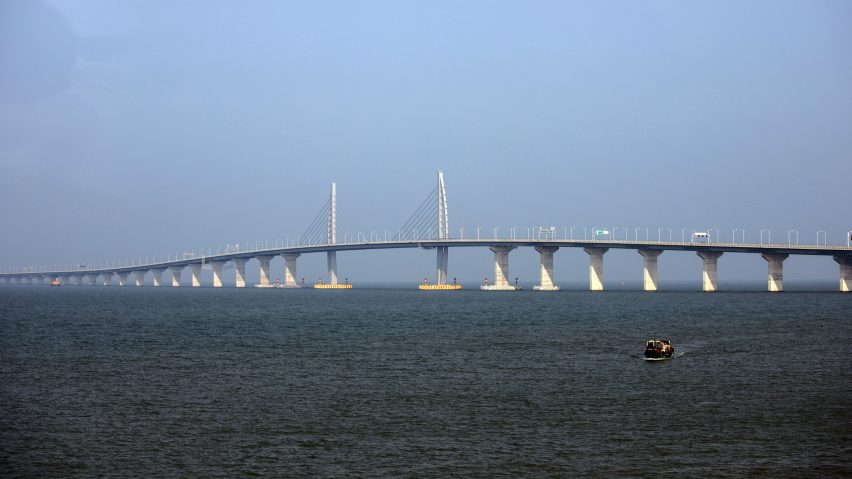
Hong Kong bridge prepares to open amid fears over structural integrity
Chinese authorities have announced that the 55-kilometre bridge between Hong Kong, the Chinese Mainland and Macau is on track to open, despite concerns that parts of the structure have been washed away by the sea.
Hong Kong's Highways Department rebuffed claims that the concrete blocks protecting an artificial island connecting the Hong Kong side of the bridge to the tunnel under Mainland China's waters have been damaged by waves.
Named the Hong Kong-Zhuhai-Macau (HKZM) Bridge, the structure consists of three cable-stayed bridges, three artificial islands and one undersea tunnel spanning 55 kilometres through the Lingdingyang channel. The route connects the three major cities of Hong Kong, Zhuhai and Macau on the Pearl River Delta.
The 29-kilometre section of the HKZM Bridge will be one of the world's longest bridges. China is also home to the world's highest bridge, the Beipanjiang Bridge.
Once open, the six-lane bridge will cut the travel time between Hong Kong and Macau from four hours to under one hour.
The HKZM Bridge was completed in November 2017 and is due to open to traffic before 1 July 2018.
Artificial island "same as it was designed"
Following reports that the artificial island had been damaged, authorities held a press conference to reassure the public that the design was functioning as planned.
"There is nothing that we can observe that has been washed away," director of highways Daniel Chung told press during a briefing last week.
"It is the same as it was designed and in fact the same as when it was just completed on year ago."
Concerns had initially been raised in May 2017 when photographs released by Hong Kong-Zhuhai-Macau Bridge Authorities appeared to show many of the concrete blocks fully submerged in the sea.
Speculation about the structural integrity of the bridge reignited earlier this month, when images taken by a local drone enthusiast and posted to Facebook allegedly showed a similar sight.
The Hong Kong Free Press reported that the submerged sea defences look different from the bridge's design documents and computer visualisations, which suggest the concrete blocks should sit proud of the water.
Chung visited Zhuhai to meet with the HKZM Bridge Bridge Authorities and inspect the project before holding the press conference. He said that there were no plans to alter the design of the island's breakwater, as they were working as intended.
HKZM Bridge delayed due to design and safety concerns
Originally the HKZM Bridge was due to open in October 2016, but the mega infrastructure project has been plagued with delays, design and safety concerns, and reports of worker deaths and injuries.
The current controversy surrounds the mid-channel artificial islands either side of the tunnel, but the Hong Kong Boundary Crossing Facilities Island (HKBCF Island) has also experienced issues.
Instead of the environmentally-damaging method of dredging the marine mud to build on reclaimed land, the HKBCF Island was made using a non-dredge method where filled circular steel cells are driven into the sea floor to form a seawall.
In 2015 the Highways Department admitted that the non-traditional method of land reclamation meant that parts of the island had moved up to 7 metres.
Then in 2017 Hong Kong's Independent Commission Against Corruption (ICAC) charged 19 employees of Jacobs China – a contractor of the Civil Engineering and Development Department – with falsifying concrete compression test results.
The number of officially reported work deaths on the HKZM Bridge currently stands at 10, with the number of reported injuries varying from 234 to 600.
Last year a member of Hong Kong’s Labour Party dubbed it the "bridge of blood and tears", suggesting the number of fatalities and accidents could be even higher on the China side of the project. The Construction Site Workers General Union called it the "bridge of death" and asked government to put a stop to what it described as "mass murder".
Reported costs for the project have been estimated at $15 billion (£10.6 billion).
Top image courtesy of Getty Images.